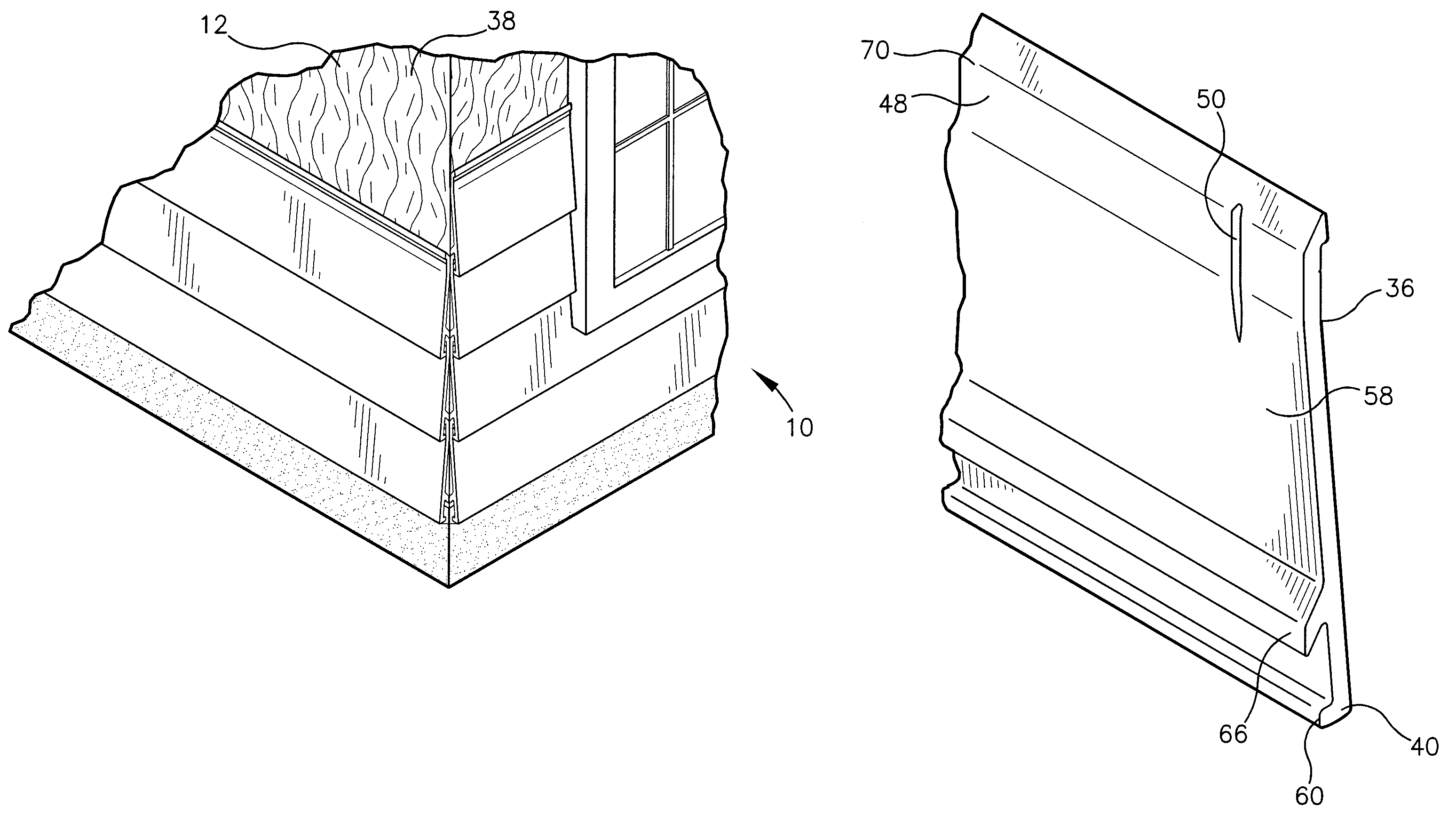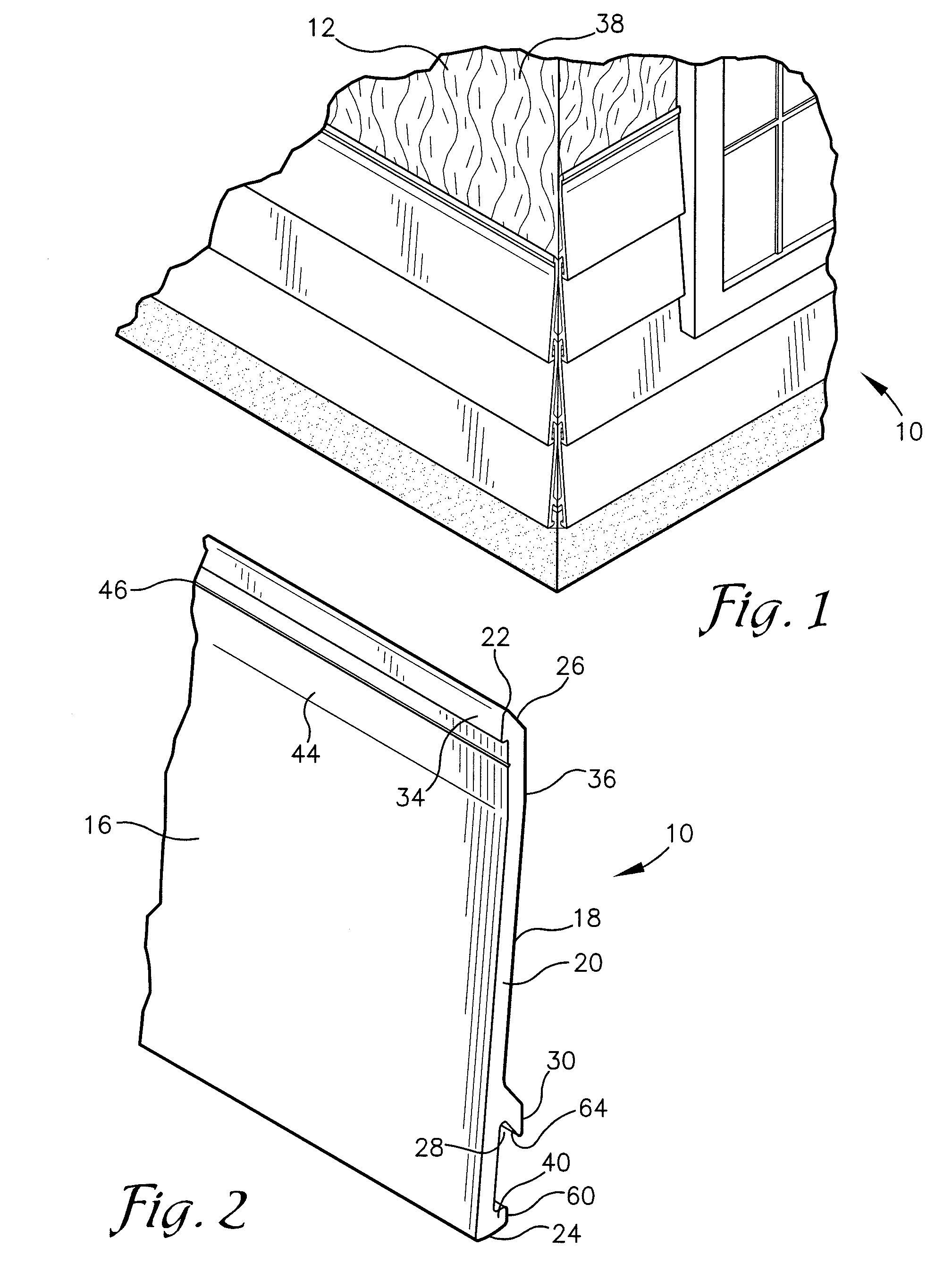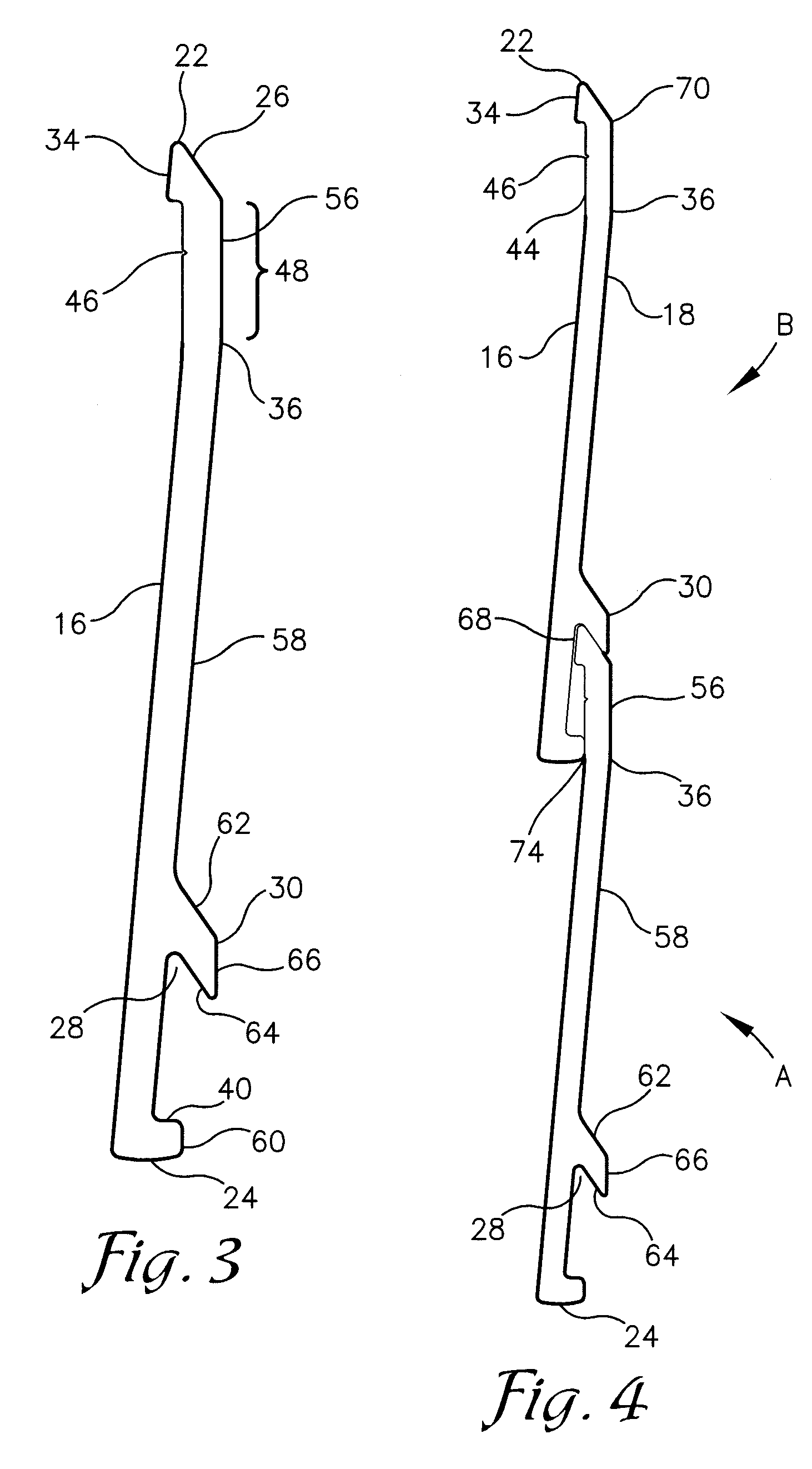Composite exterior siding panel with interlock
a technology of interlocking panels and exterior siding, which is applied in the direction of roofs, coverings/linings, constructions, etc., can solve the problems of affecting the appearance of the exterior of the building, the siding is literally peeling from the building, and the siding is not attractive, so as to facilitate the movement of moisture, facilitate the drainage of moisture, and facilitate the installation
- Summary
- Abstract
- Description
- Claims
- Application Information
AI Technical Summary
Benefits of technology
Problems solved by technology
Method used
Image
Examples
Embodiment Construction
[0027]FIG. 1 illustrates a structure 12 with several courses of exterior siding panels 10 installed thereon. The siding panels 10 can be extruded in many different widths with 4 and 7 inches the industry preferred panel widths. The panels are installed beginning at the lowest level and courses are installed progressively higher until the desired portion of the wall 38 is covered. The panels 10 are preferably extruded using a polyvinyl chloride composition with organic and inorganic fillers that contribute to thermally stabilizing the panels so that when exposed to intense solar heat the panels do not substantially expand and contract causing problems with panel buckling and loosening of the nails that anchor the panels 10 to the building wall 38. The polyvinyl chloride in conjunction with the specially formulated organic and inorganic fillers produces a mechanically tough and resilient panel that is resistant to deformation from impacts such as hail and thrown objects as well as bei...
PUM
 Login to View More
Login to View More Abstract
Description
Claims
Application Information
 Login to View More
Login to View More - R&D
- Intellectual Property
- Life Sciences
- Materials
- Tech Scout
- Unparalleled Data Quality
- Higher Quality Content
- 60% Fewer Hallucinations
Browse by: Latest US Patents, China's latest patents, Technical Efficacy Thesaurus, Application Domain, Technology Topic, Popular Technical Reports.
© 2025 PatSnap. All rights reserved.Legal|Privacy policy|Modern Slavery Act Transparency Statement|Sitemap|About US| Contact US: help@patsnap.com



